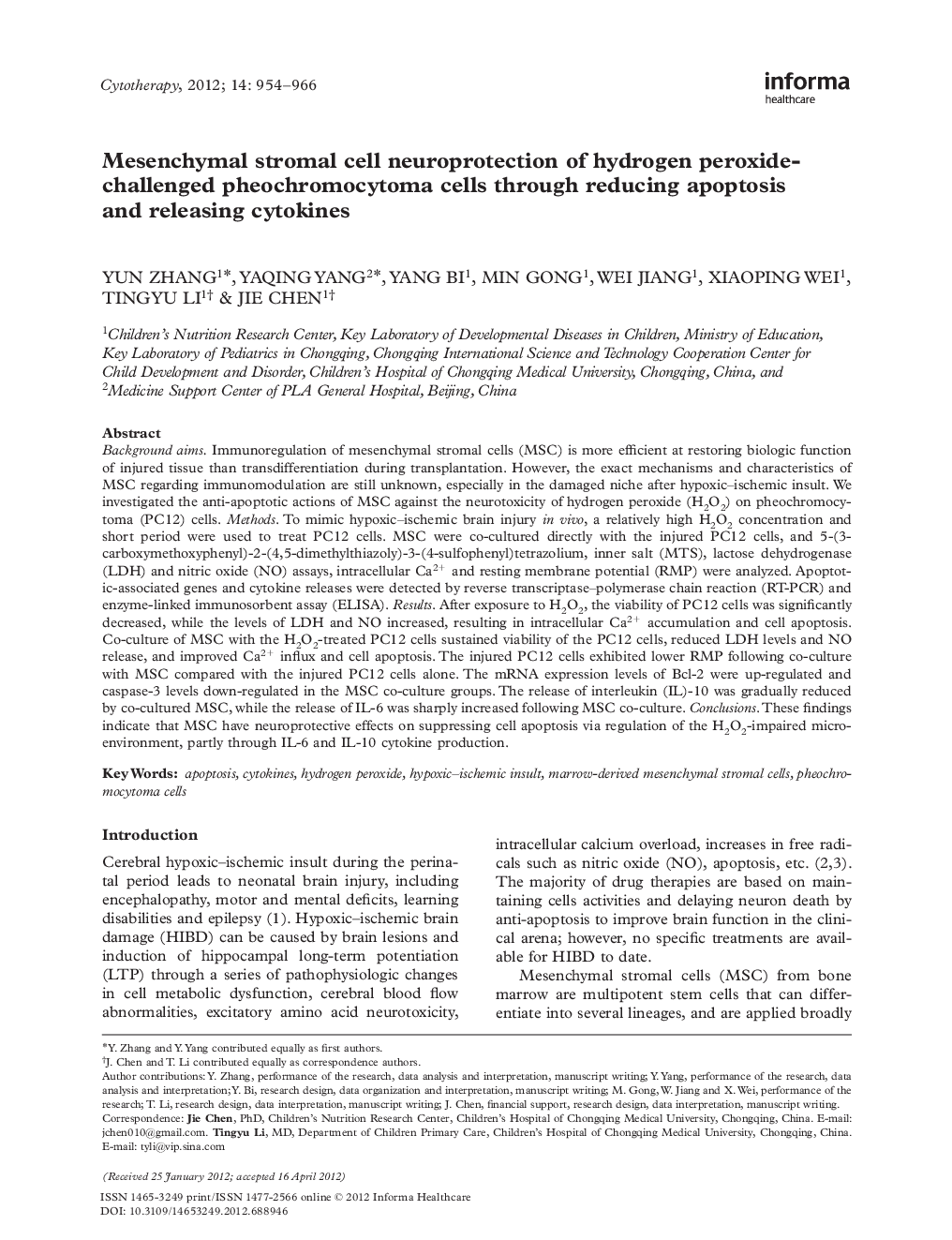| Article ID | Journal | Published Year | Pages | File Type |
|---|---|---|---|---|
| 2171924 | Cytotherapy | 2012 | 13 Pages |
Background aimsImmunoregulation of mesenchymal stromal cells (MSC) is more efficient at restoring biologic function of injured tissue than transdifferentiation during transplantation. However, the exact mechanisms and characteristics of MSC regarding immunomodulation are still unknown, especially in the damaged niche after hypoxic–ischemic insult. We investigated the anti-apoptotic actions of MSC against the neurotoxicity of hydrogen peroxide (H2O2) on pheochromocytoma (PC12) cells.MethodsTo mimic hypoxic–ischemic brain injury in vivo, a relatively high H2O2 concentration and short period were used to treat PC12 cells. MSC were co-cultured directly with the injured PC12 cells, and 5-(3-carboxymethoxyphenyl)-2-(4,5-dimethylthiazoly)-3-(4-sulfophenyl)tetrazolium, inner salt (MTS), lactose dehydrogenase (LDH) and nitric oxide (NO) assays, intracellular Ca2+ and resting membrane potential (RMP) were analyzed. Apoptotic-associated genes and cytokine releases were detected by reverse transcriptase–polymerase chain reaction (RT-PCR) and enzyme-linked immunosorbent assay (ELISA).ResultsAfter exposure to H2O2, the viability of PC12 cells was significantly decreased, while the levels of LDH and NO increased, resulting in intracellular Ca2+ accumulation and cell apoptosis. Co-culture of MSC with the H2O2-treated PC12 cells sustained viability of the PC12 cells, reduced LDH levels and NO release, and improved Ca2+ influx and cell apoptosis. The injured PC12 cells exhibited lower RMP following co-culture with MSC compared with the injured PC12 cells alone. The mRNA expression levels of Bcl-2 were up-regulated and caspase-3 levels down-regulated in the MSC co-culture groups. The release of interleukin (IL)-10 was gradually reduced by co-cultured MSC, while the release of IL-6 was sharply increased following MSC co-culture.ConclusionsThese findings indicate that MSC have neuroprotective effects on suppressing cell apoptosis via regulation of the H2O2-impaired microenvironment, partly through IL-6 and IL-10 cytokine production.
